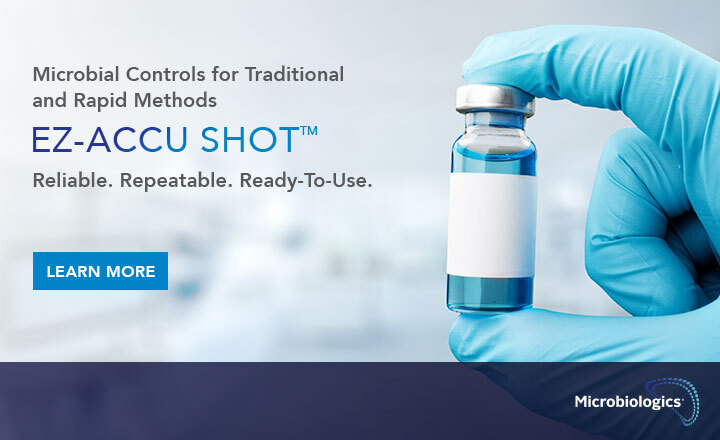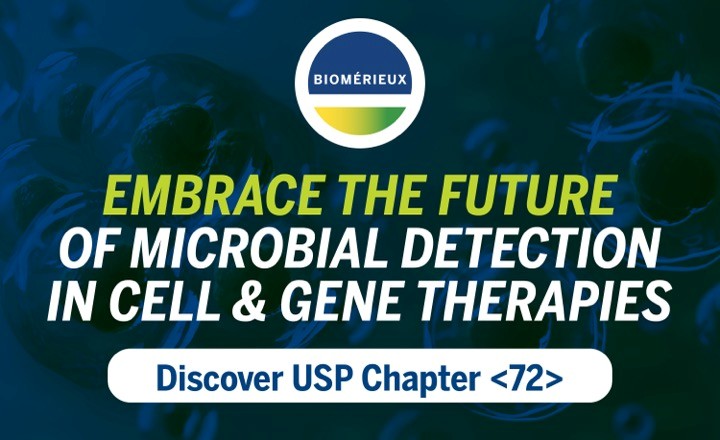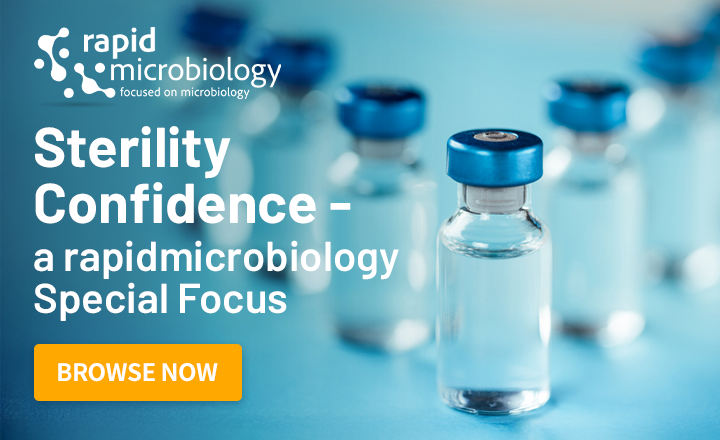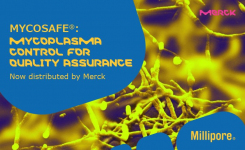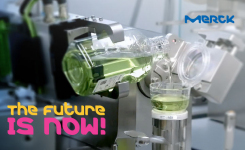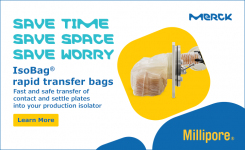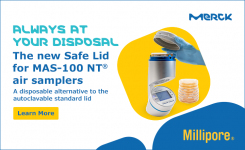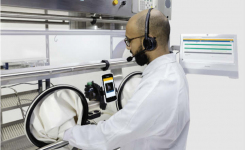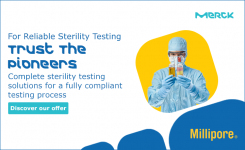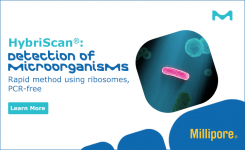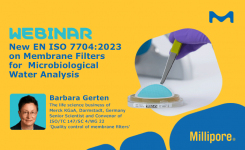Introduction: Unprecedented pressure on vaccine developers due to the COVID-19 crisis, has drawn attention to rapid methods, for in vitro and in vivo testing. With each vaccine developer's desire to produce a safe vaccine as fast as possible, rapid microbial test methods are predicted to play a vital role in COVID-19 vaccine production.
Anne Connors, Senior Field Marketing Specialist at Merck, talks about how the Milliflex® Family, including the Milliflex® Quantum rapid bioburden test, can reduce risk of cross-contamination, ensure better accuracy, provide a user-friendly experience for the microbiologist and aid in traceability and data integrity.
Q. What are the main steps in the microbial testing workflow during vaccine production that cause delays?
Anne: The biggest delay in any microbial testing workflow is waiting for the results. Bioburden tests and environmental monitoring samples can take three to five days for results, with sterility testing taking up to 14 days, consequently delaying product release.
So, whether its vaccine production or pharmaceuticals, you're still taking final product and doing release testing. The production process might be different, but sterility testing is the same.
Q. Which of your products will be of most value to vaccine developers right now, and why?
Anne: That's difficult to choose, because with microbial contamination, no one test is more valuable or critical than the other. And, with Merck, our QC micro products can offer solutions for each step in the workflow where microbial contamination is a risk to vaccine production. I would consider our Milliflex® Family of bioburden testing products to be valuable due to the simplicity it adds to the process.
Q. How do the Milliflex® Quantum and Rapid systems compare with rapid tests on the market?
Anne: The Milliflex® Quantum is a fully quantitative, low-footprint and easy to use rapid component to the traditional workflow. You do the same sample prep and testing that you usually do as a current user of the Milliflex Oasis® Filtration System. But with the addition of a couple of steps, which include a membrane transfer step and a staining and incubation step, where the Milliflex® Quantum will rapidly detect fluorescence of any culturable microorganism present.
It is also nondestructive to microbes, allowing the user to isolate and identify these microorganisms.
Q. How does the Milliflex Oasis® Filtration System provide more reliable and accurate results?
Anne: The Milliflex Oasis® is a bioburden testing system and is one of our newest products. So anytime you’re testing raw materials or in-process solutions or process water, you utilize the Milliflex Oasis® to test those samples.
As far as bioburden testing goes, the Milliflex Oasis® is probably one of the easiest systems to use, to implement, and to validate. We’ve made the whole workflow as simple and as user-friendly as possible, as well as minimizing risk in the lab.
For example, when processing samples, you don’t want your operator to do too many transfers or handle the membranes while performing filtration testing, due to risks of cross-contamination. The Milliflex Oasis® bioburden testing system avoids those risk factors, and this is where its inherent accuracy lies.
Its components are clearly marked to ensure accuracy, with measurement lines on the funnels, clearly-marked grid system on the membrane, transparent materials, and color-coded plates; all of these components aid in obtaining accurate results.
Before the Milliflex Oasis®, we had the Milliflex® Plus Pump system for bioburden testing. We adapted this system into the Oasis®, by implementing everything our customers wanted, that was possible. This includes color-coding and adding more visually enhanced labelling. It now has two filtration heads as opposed to just one; the pump is lighter, it’s easier to validate and maintain, and it’s 50% faster!
Q. How is traceability and data integrity handled in these systems?
Anne: All Milliflex® components are clearly labelled, from the outer packaging on the filtration units to the media itself, and everything is color-coded too. So, before you even open the box, you can see from a distance what type of media you’re using.
For example, all of the components on the outer packaging and the inner packaging come with a 2D data matrix barcode. These labels are also removable, allowing transfer to a worksheet or a lab notebook. All the barcodes allow for instant scanning for an electronic LIMS system. Even the media cassettes are color-coded, allowing easy differentiation between media types. And knowing which media you are using is especially useful when putting samples in the incubator.
Q. How does Merck support manufacturers through the validation and regulatory compliance process?
Anne: That’s one of the great things about Merck, we can offer full support. Our in-house technical expertise can provide support and training, whether it’s over the phone or in-person. If somebody wants to implement a rapid method, and they want to make sure their samples are compatible with our system, they can send samples to us so we can perform feasibility testing, method development, SOPs, all the way through to performance qualification of that product.
Then once implemented, we can provide validation support, additional training services and equipment servicing.

Anne Connors Biography:
Anne is Senior Field Marketing Specialist for Merck's BioMonitoring Division in North America and has been with Merck for just over nine years. Anne has a background in pharmaceutical microbiology. Previous to this role she was a senior scientist in QC microbiology and holds a Bachelor's of Science Degree in Biology.





